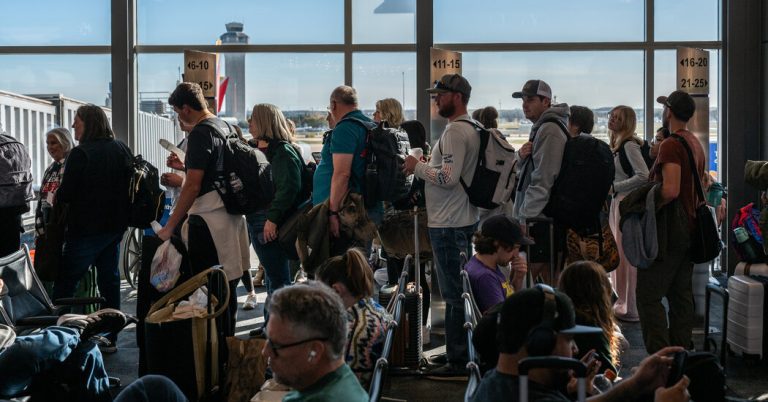This year is just getting started, but it’s already shaping up nicely for US airlines.
After several setbacks, the industry closed 2024 in a fairly strong position due to healthy demand for tickets and the ability of many airlines to control costs and raise fares, experts said. Barring major problems, airlines – especially the bigger ones – should enjoy a great year, analysts said.
“I think it’s going to be pretty blue skies,” said Tom Fitzgerald, an airline industry analyst for investment bank TD Cowen.
In recent weeks, many major airlines have upgraded their forecasts for the all-important final three months of the year. And on Friday, Delta Air Lines announced that it generated more than $15.5 billion in revenue in the fourth quarter of 2024, a record.
“As we move toward 2025, we expect strong demand for travel to continue,” Delta CEO Ed Bastian said in a statement. That put the airline on track to “deliver the best financial year in Delta’s 100-year history,” he said.
The airline also beat analysts’ earnings estimates and said it expects earnings per share, a measure of profitability, to rise more than 10 percent this year.
Delta’s upbeat report offers a preview of expected similarly rosy updates from other carriers reporting earnings in the coming weeks. That should be welcome news for an industry that has been weighed down by various challenges, even as demand for travel has rebounded since the pandemic.
“For the last five years, I felt like every bird in the sky was a black swan,” said Ravi Shanker, an airline-focused analyst at Morgan Stanley. “But it looks like this industry has its ducks in a row.”
That is, of course, if everything goes according to plan, which rarely happens. Geopolitics, terrorist attacks, air safety issues and, perhaps most importantly, an economic downturn could all hurt demand for travel. Rising costs, particularly for jet fuel, could erode profits. Or the industry could face problems such as a supply chain disruption that limits the availability of new planes or makes it harder to repair older ones.
Early last year, a panel blew up a Boeing 737 Max during an Alaska Airlines flight, raising concerns about the safety of the manufacturer’s planes, which are used on most flights operated by U.S. airlines, according to Cirium. an aviation data company.
The incident forced Boeing to slow production and delay deliveries of the jets. This disrupted the plans of some airlines that had hoped to carry more passengers. And airlines could do little to adapt because the world’s biggest jet maker, Airbus, lacked the capacity to respond – both it and Boeing have long order backlogs. In addition, some Airbus aircraft were affected by an engine problem that forced carriers to take the jets out of service for inspections.
There was another disturbance. Spirit Airlines has filed for bankruptcy. A brief technology outage has wreaked havoc on many airlines, causing travel disruptions and resulting in thousands of flight cancellations in the heart of the busy summer season. And during the summer, smaller airlines were flooded with seats on popular domestic routes, squeezing profits during what is usually the most profitable time of year.
But the industry’s financial position began to improve when airlines cut the number of flights and seats. While this was bad for travelers, it increased fares and increased profits for airlines.
“You’re in an imbalance of demand versus supply, which gives the industry pricing power,” said Andrew Didora, an analyst at Bank of America.
At the same time, airlines are trying to improve their operations. American Airlines has overhauled a sales strategy that had disappointed corporate customers, helping it win back some travelers. Southwest Airlines has made changes aimed at cutting costs and boosting profits after a push from hedge fund Elliott Management. And JetBlue Airways unveiled a strategy with similar goals, after a less contentious battle with investor Carl C. Icahn.
These improvements and industry trends, along with stabilizing fuel, labor and other costs, have set the stage for what could be a banner 2025. “All of this is the best setup we’ve had in decades “, said Mr. Shanker.
But this will not happen immediately. Travel demand tends to be subdued in winter. But business travel is picking up somewhat, due to events like this week’s Consumer Electronics Show in Las Vegas.
The positive outlook for 2025 is probably strongest for the largest US airlines — Delta, United and American. All three are well-positioned to take advantage of upward trends, including steadily recovering business travel and customers willing to spend more on better seats and international flights.
But some smaller airlines can also do well. JetBlue, Alaska Airlines and others have added more premium seats, which should help boost profits.
While generally optimistic, Mr. Shanker acknowledged that the industry was vulnerable to a number of potential problems.
“I mean, this time last year you were talking about doors falling off planes,” he said. “So who knows what might happen.”




